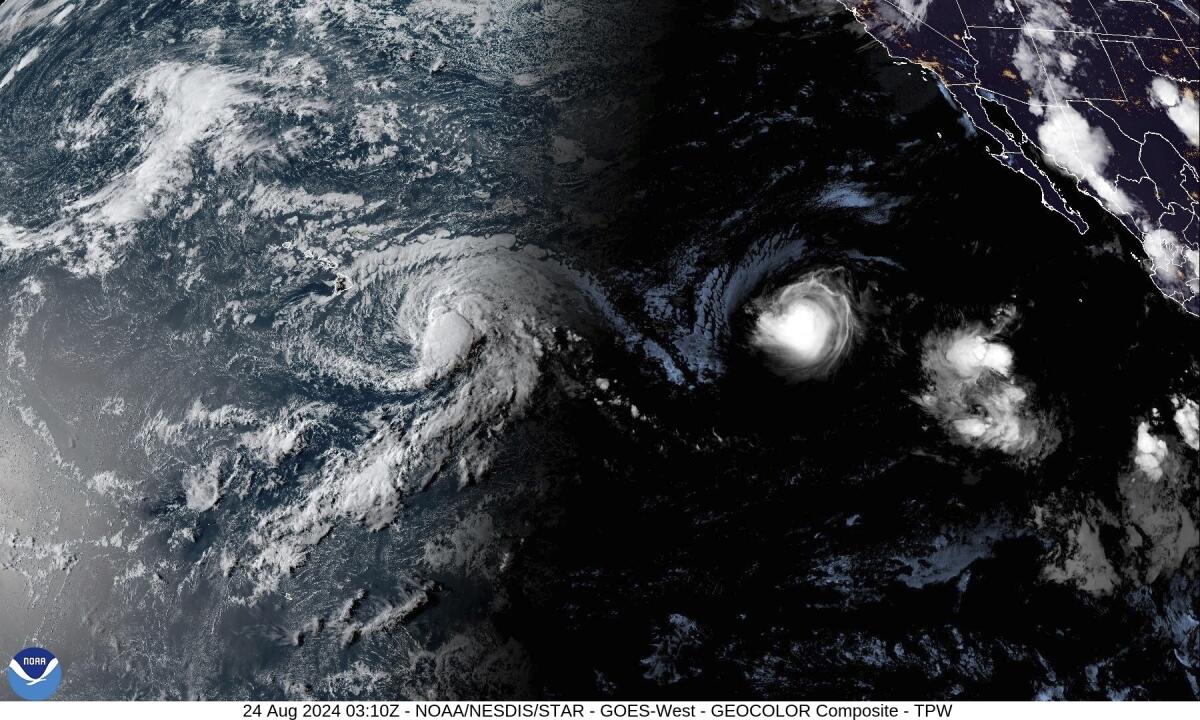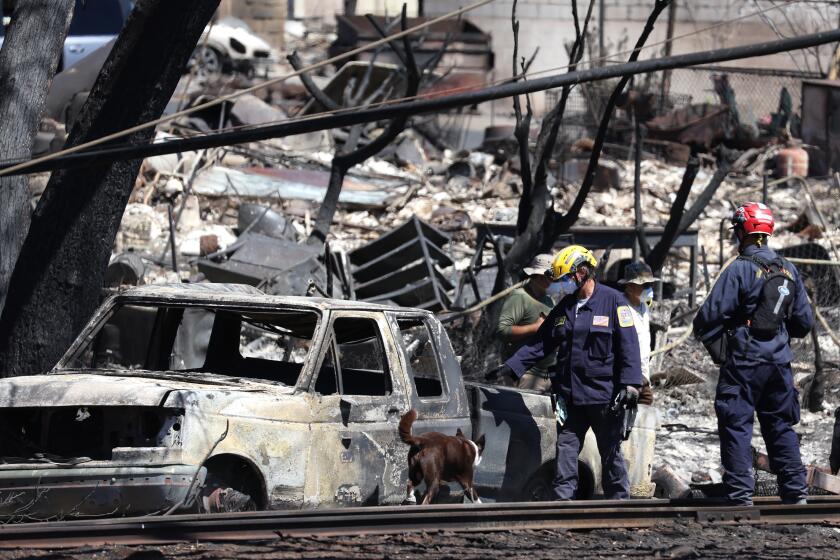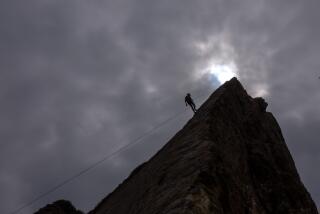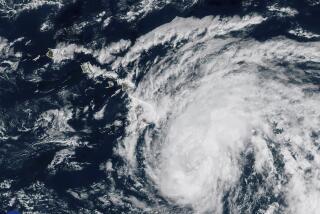Hawaii’s Big Island is under a tropical storm warning as Hone threatens floods and fires

HONOLULU — Tropical Storm Hone drew near Hawaii on Saturday with wind gusts and heavy rain that could cause flooding on the Big Island while raising the risk of wildfires on the islands’ drier sides.
Hone, which means “sweet and soft” in Hawaiian, had top winds of 65 mph early Saturday. It will likely strengthen into a Category 1 hurricane as it passes near or south of the Big Island from Saturday afternoon into early Sunday, according to the National Hurricane Center in Miami.
A tropical storm warning was in effect for the Big Island, and a red flag fire warning was issued for the leeward sides of all islands through 6 p.m. on Saturday. The National Weather Service issues the alert when warm temperatures, very low humidity and stronger winds combine to raise fire dangers.
“They gotta take this thing serious,” said Calvin Endo, a Waianae Coast neighborhood board member who lives in Makaha, a leeward neighborhood prone to wildfires on the island of Oahu.
Most of the archipelago is already abnormally dry or in drought, according to the U.S. Drought Monitor. The winds are expected to be strongest where they blow downslope from higher terrain, over headlands and through passes, the hurricane center advised.
‘We’re going to survive and it’s going to come back’: A year after Maui wildfire, Lahaina presses on
Hawaiians have faced a year of challenges since the deadliest U.S. wildfire in a century devastated the historic Maui town of Lahaina in 2023.
The situation recalls last year’s deadly wildfires on Maui, which were fueled by hurricane-force winds. While Hone presents high fire dangers, “it’s not on the magnitude of that,” weather service meteorologist Derek Wroe in Honolulu said Saturday.
The Aug. 8, 2023, wildfire that torched the historic town of Lahaina was the deadliest in the U.S. in more than a century. Powerful winds whipped up in part by a hurricane passing to Hawaii’s south helped fuel the flames that killed 102 people. Dry, overgrown grasses and drought helped spread the fire.
California’s bone hunters, forensic experts who are veterans of disaster, sift through Maui’s burn fields for the missing dead. ‘We owe it to the families.’
For years, Endo has worried about dry brush on private property behind his home. He’s taken matters into his own hands by clearing the brush himself, but he’s concerned about nearby homes abutting overgrown vegetation that could fuel fires.
“All you need is fire and wind and we’ll have another Lahaina,” Endo said Saturday morning. “I notice the wind started to kick up already.”
The cause of the Lahaina blaze is still under investigation, but it’s possible it was ignited by bare electrical wire and leaning power poles toppled by the strong winds.
The state’s two power companies, Hawaiian Electric and the Kauai Island Utility Cooperative, said they would be monitoring conditions this weekend and ready to shut off power if necessary to reduce the chance that damaged power lines could start fires.
The Hawaii Tourism Authority told travelers it’s still safe to come to the islands but recommended that people postpone outdoor activities.
Hone was about 220 miles southeast of Hilo and 425 miles east-southeast of Honolulu on Saturday morning.
The eastern and southeastern parts of the Big Island could get 5 to 10 inches of rain. The island could get sustained winds of 20 to 40 mph and gusts near 60 mph, the hurricane center said.
Moving westward across the Pacific behind Hone was Category 2 Hurricane Gilma, but it was expected to weaken over cooler waters as it encounters drier air in coming days and was forecast to become a tropical depression by Wednesday. Gilma may bring rain to Hawaii, but it’s not clear how much, said Laura Farris, a weather service meteorologist in Honolulu.
McAvoy and Sinco Kelleher write for the Associated Press.
More to Read
Sign up for Essential California
The most important California stories and recommendations in your inbox every morning.
You may occasionally receive promotional content from the Los Angeles Times.












